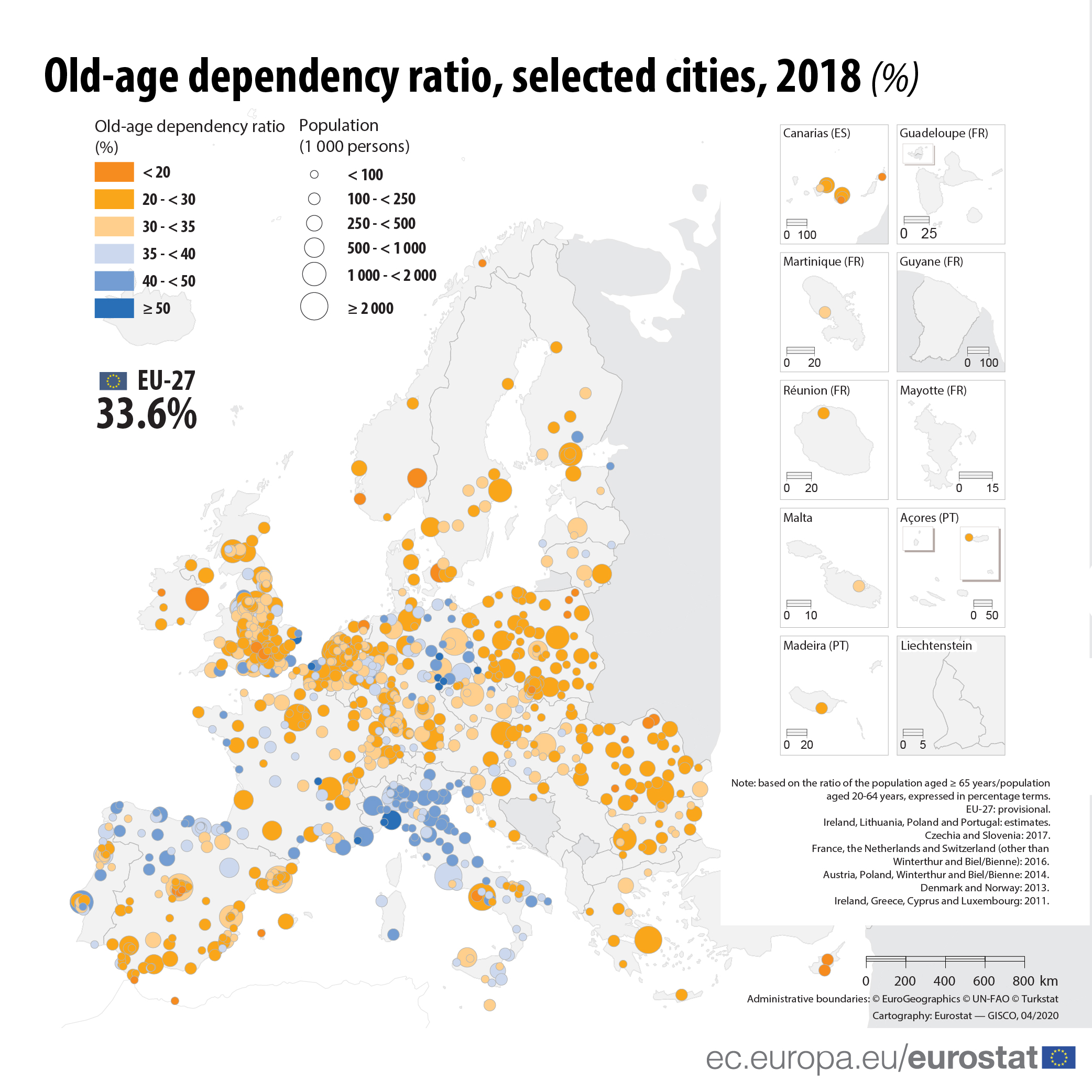In the EU, the old-age dependency ratio stood at 34% in 2018. This means that there were on average three people of working-age (aged 20-64 years) for every older person (aged 65 or more).
In 2018, there were almost twice as many cities (476) that had an old-age dependency ratio that was below the EU average, as there were cities with a ratio above the average (261 cities).
On the occasion of World Cities Day, we take a look at the demographic diversity in cities of the EU.
Source data: Population at regional level (map 5)
Capital cities, other major conurbations and their surrounding areas tend to attract relatively high numbers of young people. As a result, there were a number of cities in Spain, Ireland, Cyprus, the Netherlands (2016 data), Poland (2014 data) and Romania that recorded very low old-age dependency ratios — many of these cities were part of conurbations close to some of Europe’s major cities.
In 2018, the lowest old-age dependency ratios in the EU were recorded in Rivas-Vaciamadrid (11%) and Valdemoro (14%), both close to the Spanish capital city of Madrid, and Galway in Ireland (14%; 2011 data).
In contrast, by far the highest old-age dependency ratio, with a ratio of at least one person aged 65+ per two working age adults, was recorded in the French coastal resort of Fréjus (65%; 2016 data), followed by nine other cities:
- Dessau-Roßlau (56%) as well as Görlitz, Gera, Zwickau and Plauen (all around 51%) in eastern Germany,
- the coastal cities of Savona (52%) and Genova (51%) in Italy and Oostende (51%) in Belgium, and
- Roanne (51%) in France (2016 data).
In 2018, the majority of EU cities with an old-age dependency rate of 45% or more were located in Italy (14 cities), Germany (8 cities) and France (5 cities; 2016 data).
Would you like to know more about population statistics at regional or city level?
You can find more information in the dedicated chapter of the new digital publication Regions in Europe, in the dedicated chapter of the Eurostat regional yearbook 2020 as well as in the corresponding maps in Statistical Atlas.
Note: The European Union (EU) includes 27 EU Member States. The United Kingdom left the European Union on 31 January 2020. Further information is published here.
To contact us, please visit our User Support page.
For press queries, please contact our Media Support.


